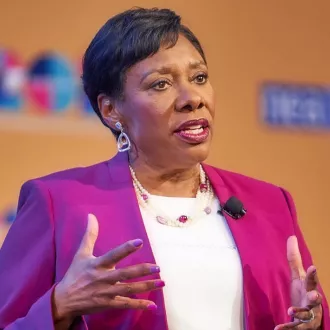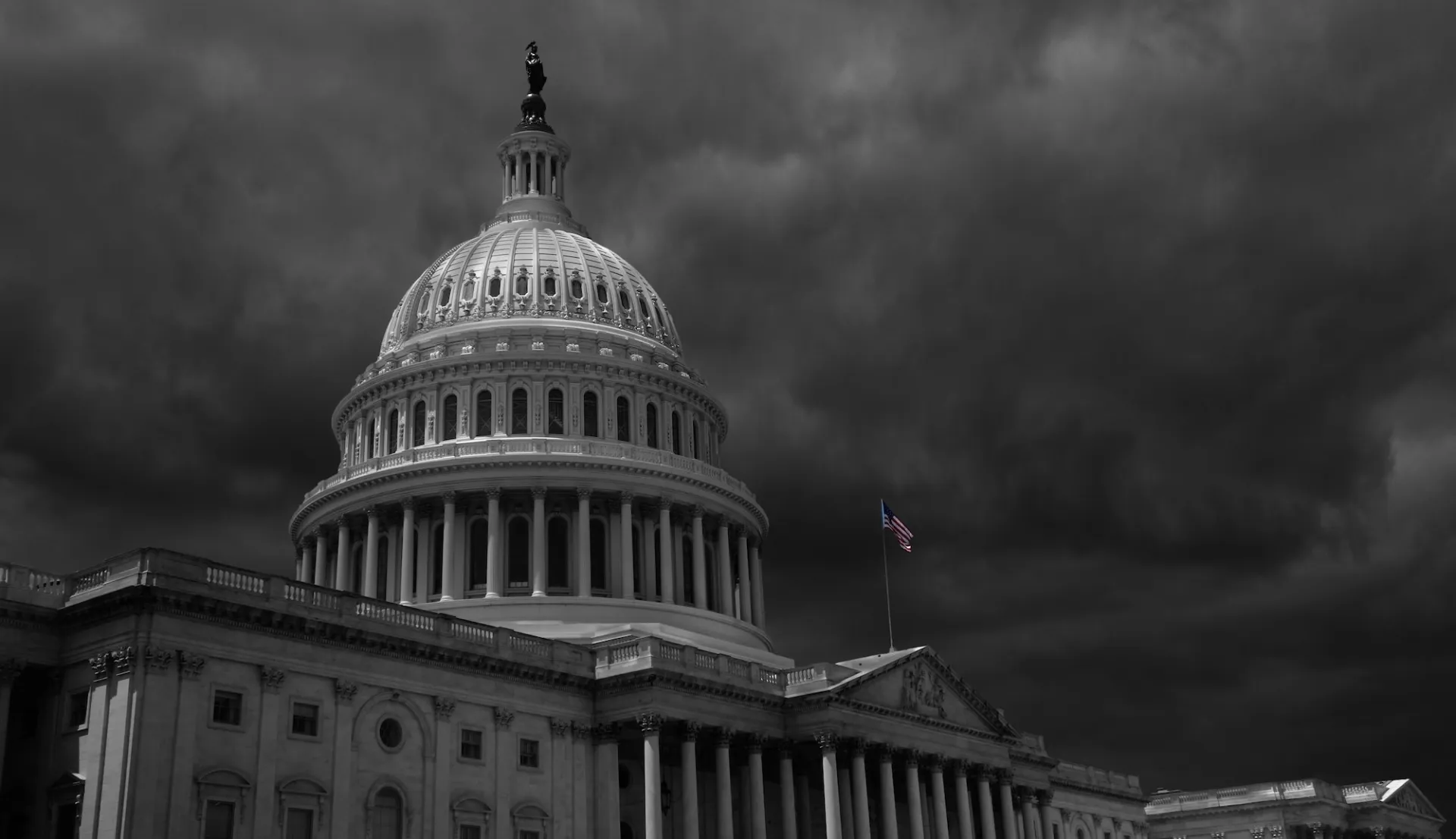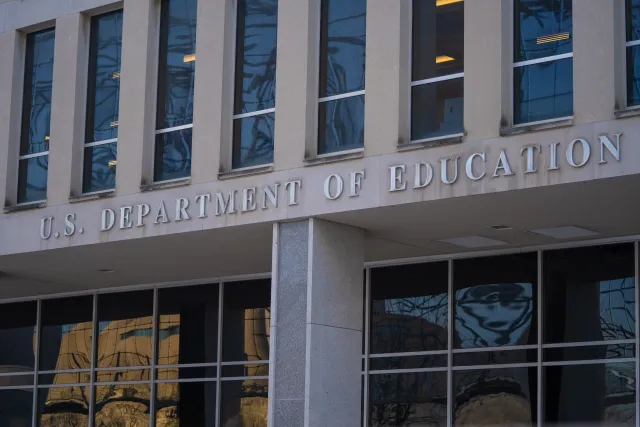Key Takeaways
- After already making deep cuts to staff at the Department of Education (ED) last spring, Trump administration uses shutdown to cut more, particularly staff that carries out services for students with disabilities.
- By firing nearly every employee who supports special education, advocates say the administration is turning its back on 7.5 million children who have disabilities.
- Parents of children with disabilities, already facing higher costs with SNAP and Medicaid cuts, feel the administration targeting the public schools and the services their kids need.
Kim Pinckney is worried for her son. The New Jersey mom has been watching as the Trump administration has used the federal government shutdown to further decimate the special education services her son, who has autism, ADHD, and expressive and receptive speech disorders, relies on.
“I’m a proud parent of a neurodivergent student, and I’m heartbroken,” Pinckney says. “I am one of those parents with the audacity to love my child and to believe he deserves a free and appropriate education. I am one of millions of parents who have the audacity to believe our children are worthy and that they have their own unique genius that deserves to be unearthed.”
The Trump administration already made deep staffing cuts to the Department of Education (ED) earlier this year and is now using the shutdown to decimate the agency’s services for special education students. The reduction-in-force, or RIF, affects the dozens of staff members responsible for roughly $15 billion in special education funding and for making sure states provide special education services.
On October 15, a federal judge temporarily halted the cuts, but NEA President Becky Pringle says the administration’s intent is clear: to weaken the federal commitment to our nation's 7.5 million students with disabilities.
“This is a critical issue that goes to the very heart of who we are as a nation. Every student, no matter where they live or whether they have a disability. deserves the opportunity to learn and grow in their neighborhood public school,” Pringle says. “A school that has the resources to meet their uniquely individual needs; a school where inclusion and equity aren’t just words but are the values that shape everything we do.”
What this would amount to is a rollback to a darker time, Pringle adds, when students with disabilities were excluded from public schools and often institutionalized rather than educated. They were cast aside, denied opportunity, and stripped of their dignity.
Breaking the Promise of IDEA
With the passage of IDEA 50 years ago, America made a promise to students with disabilities and their families that they could participate fully in learning and reach their potential. Taking that opportunity away, disabilities advocates say, is simply cruel.
“The fact that Trump is gleefully using the shutdown as a pretext to hurt students is appalling,” Sen. Patty Murray (Washington), the top Democrat on the Senate Appropriations Committee, told the Washington Post. “No one is forcing Donald Trump to fire the people who make sure students with disabilities can get a good education — he just wants to.”
By firing nearly every employee who supports special education in ED, advocates say the administration is turning its back on 7.5 million children who have disabilities.
Quote byBecky Pringle , NEA President

Parents are already struggling to afford healthcare, put meals on the table, and to pay for basic living expenses as programs like the Supplemental Nutrition Assistance Program(SNAP) and Medicaid are being cut. Now families are also worried about the administration targeting the public schools and the services their kids need.
“My son is my heartbeat outside of my chest, and so I will continue to fight for him, but parents should not feel like no one else has their back,” Pinckney says. “That's what these cuts have done. It makes people feel like no one really cares.”
What Does ED Do for Students with Disabilities?
The reason we have a special education law is because prior to IDEA, millions of children with disabilities were denied an education.
“States would not educate them. They thought that they weren't worthy of an education,” says Katy Neas, CEO of The Arc, a nonprofit advocacy group.
It's because of IDEA that students can go to their neighborhood school, that states and districts and teachers have access to science-based interventions, and the knowledge of how to effectively meet the educational needs of students with disabilities.
The Department of Education is a vehicle to disperse federal funds, but it’s much more than that, Neas explains.
“It's also the competence of and expertise of the staff who understand the law, who understand the interplay between the state and the federal law, and who can answer questions not only to educators, but to parents,” she says. “The department gets literally thousands of questions every year from parents wanting to understand their rights and responsibilities. It is that partnership with stakeholders that the Department of Education plays and is that trusted voice and a source of accountability.”
Even before the shutdown, calls from Americans who needed guidance from ED’s legal and policy experts went unanswered with no staff to field them.
Trump Administration Shifts Costs to States
The administration’s goal is to send IDEA funding to states as a block grant with little to no oversight or accountability.
“The structure to ensure the rights and protections of students with disabilities and their families is ruptured without the federal role,” says Tom Zembar, an NEA analyst who focuses on education policy and practice. “And while grant funds flow to states, there will be no additional federal resources given to states to replicate the monitoring, oversight, and enforcement activities conducted by the Office of Special Education Programs and the Office for Civil Rights.”
States will have to pick up those costs, and it’s doubtful they can afford to do so. For example, the special education office often works together with the Office for Civil Rights when schools violate student rights. Nearly 70% of the complaints OCR handles are related to disability complaints. States are not prepared to handle these cases, Zembar says.
The greatest risk, he says, is that we will end up with 50 different approaches to serving students with disabilities with wide variation across states. The purpose of IDEA was to ensure that no matter where a student with a disability lives, they are guaranteed a free and appropriate education.
Case in point: In 2017, it took federal officials to force Texas to lift an arbitrary cap on the number of students receiving special education services. The limit meant that schools often denied special education services to students with autism, ADHD, and epilepsy or offered inadequate accommodations.
Recently, Nevada struggled with timelines for evaluating students for special education services, while Michigan saw a rising number of complaints from parents of children with dyslexia who weren’t receiving the reading help they needed
Already in 2025, ED put more than half the states in the country on notice that they were failing to adequately serve children with disabilities.
Clearly there is wide variation in compliance across the states, but it’ll be much more chaotic without the federal monitoring and oversight that comes from the Office of Special Education Programs and the Office for Civil Rights.
“Once those are relaxed or dismantled, either through hollowing out the offices or through block granting IDEA, or both, we have essentially turned the clock back 50 years and broken the promise of IDEA to students with disabilities and their families,” Zembar says.






